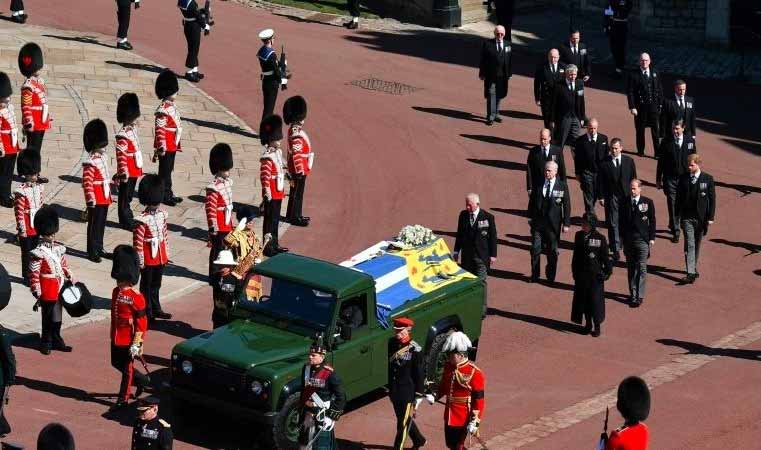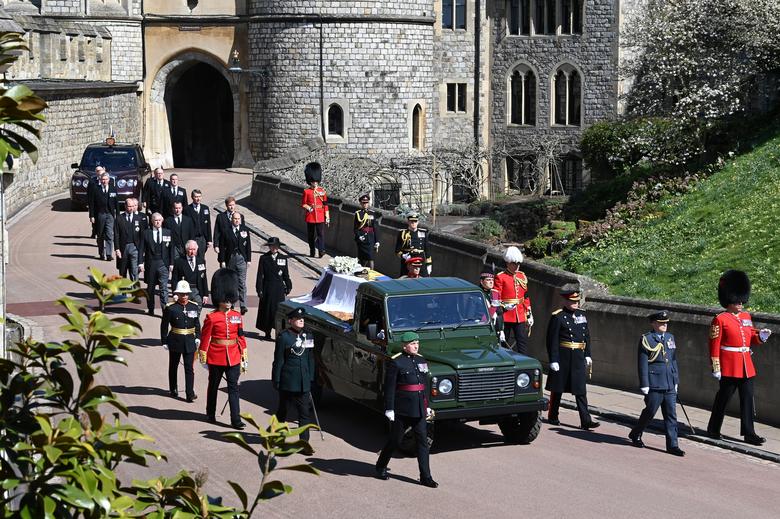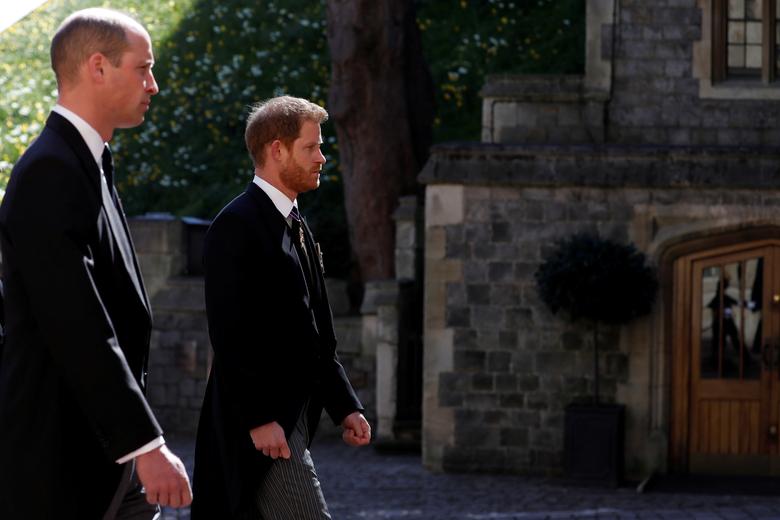Queen Elizabeth II on Saturday bid farewell to her late husband, Prince Philip, at a royal funeral like no other, restricted by coronavirus rules but reflecting his long life of military and public service. The Duke of Edinburgh, who passed away on April 9 at age 99, was interred in the Royal Vault at St George’s Chapel at Windsor Castle after a 50-minute service attended by just 30 guests.

The Queen, 94, seen for the first time since his death, was dressed in mourning black, with a white-trimmed, black face mask. Close family, also masked, sat socially distanced in the historic 15th-century Gothic chapel.

Philip — described by royals as “the grandfather of the nation” — was Britain’s longest-serving royal consort and was married to the Queen for 73 years. He was an almost constant presence at her side during her record-breaking reign that began in 1952 as Britain rebuilt from World War II, and as its global empire began to unravel.

His death, which the family said had left a “huge void” in the Queen’s life, has robbed her of the man she called her “strength and stay” and closes a remarkable chapter for Britain’s most famous family, and in the country’s history.
The last high-profile funeral of a senior royal was for the Queen’s mother, who died in 2002, aged 101. But unlike then, when more than one million people thronged outside Westminster Abbey in central London to watch the sombre pageant, the public was noticeably absent from Saturday’s ceremony.
Government guidelines limited the number of mourners and a quartet performed hymns the duke chose himself in a barren nave stripped of seating.

The ceremonial funeral from behind the stately castle walls was broadcast live on television to millions across Britain and the world.
Beforehand, a military gun fired to signal a minute’s silence, when his coffin, draped in his standard and topped by a wreath of white roses and lilies from the Queen, his naval cap and ceremonial sword was borne by a bespoke Land Rover hearse he designed himself, arrived at the chapel.

Across Britain — on the streets, in shops, railway stations and at sporting events — people bowed their heads with respect.

Flights in an out of nearby Heathrow Airport were stopped for the duration of the ceremony.
Despite the restrictions, the stripped-down sendoff for the former Royal Navy commander still combined centuries of royal protocol with pomp, pageantry — and military precision.
Members of the British armed forces, in formal dress, lined the procession route, heads bowed, as the cortege passed, as a minute gun rang out across the grounds and a bell tolled.


Philip’s grandsons William, 38, and Harry, 36, joined the procession, in their first public meeting since a reported falling out about Harry’s shock move to California, and his stinging criticism of royal life, including racism in the family.
Harry had to quarantine when he arrived back in Britain for the first time since his move to the United States with his wife, Meghan, last year. Meghan reportedly watched the funeral at her home in California after she was advised by her doctor not to travel while pregnant. US networks showed the funeral live as did British TV stations.


The religious service was a simple affair, reflecting the wishes of the straight-talking duke, who was known for his aversion to “fuss”.
In keeping with his wishes, there was no sermon, but the service reflected his love of the sea, and long association with the Royal Navy, including hymns and Bible readings.
The Queen, who had been escorted to the chapel by a lady-in-waiting in the royal Bentley, watched from the chapel choir as her husband’s was lowered steadily into the Royal Vault by electric motor.

The Pipe Major of the Royal Regiment of Scotland played a lament, and buglers of the Royal Marines sounded The Last Post.
When the Queen dies, he will be transferred to lie alongside her in the King George VI memorial chapel, which houses the remains of her father, George VI, her mother, also called Elizabeth, and the ashes of her younger sister, Margaret.








